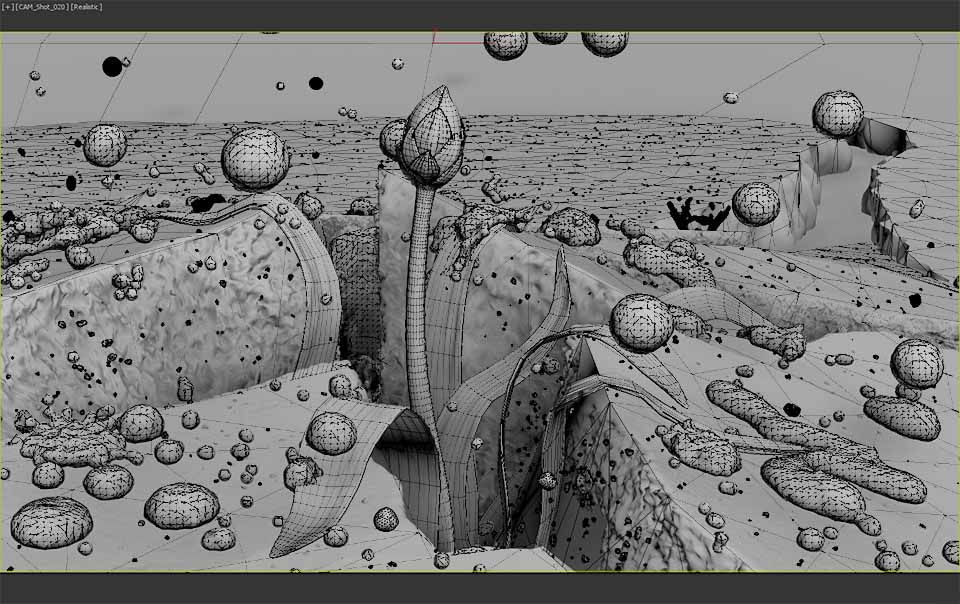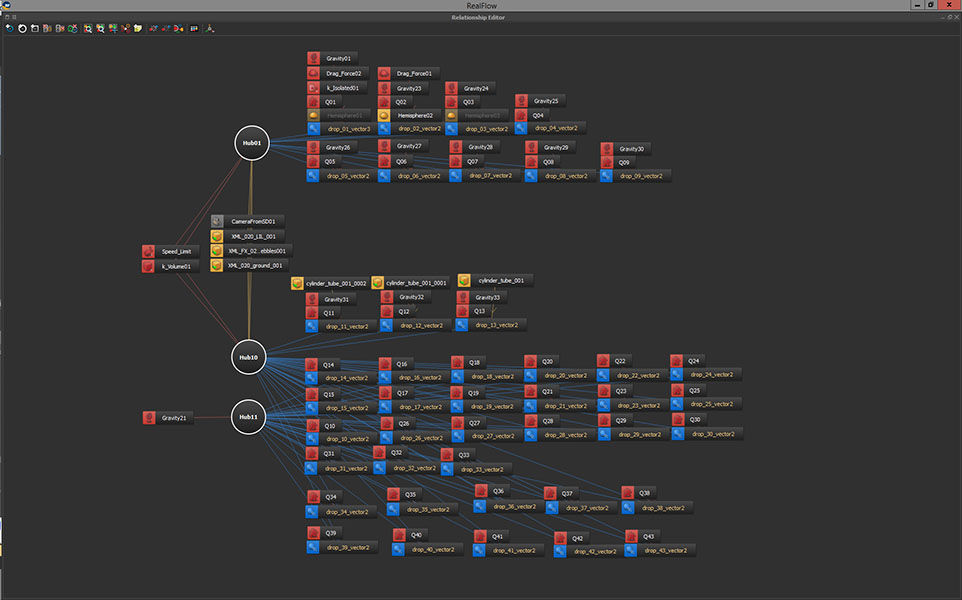top of page
Bloom is a vignette about life and beauty, created in loving memory of Jenny Considine-Mueller.
Bloom was created by Romain Faure, Josh Clos, Cristina Barna, and Alec Considine-Mueller. Tools used included 3DS Max, Pflow, Vray, Maya, nCloth, Realflow, Photoshop, and Nuke. Romain Faure is responsible for modeling, lighting, rendering and compositing; Cristina Barna did concept design, styleframes and art direction; Josh Clos did FX simulations and dynamics; and the sound design is by Alec Considine-Mueller.




The simulation of the plant leaves was done in Maya using nCloth. The shot with a single leaf was simulated by taking a flat leaf and allowing a bend resistance map to naturally bend the leaf to a resting position before introducing additional forces to simulate rainfall hitting the surface. The wide shot of the full plant couldn't be simulated that way because the geometry penetrates itself in multiple places so for that shot, I used mainly distance constraints which worked pretty well but was a heavier simulation due to the poly count.




The rain splashes were simulated in Realflow using hundreds of individual sphere emitters and python scripts that would freeze the particles at the beginning of the sim and release them one by one in a random way. The emitters would have variable speeds, sizes, release times, and positions all controlled by pythons scripts and expressions. For close up shots, I used manually keyframed emitters in order to specifically direct the fluid. I made use of the Realflow Q plugin from Yannik F which worked very well but has an extreme effect on simulation times. My longest sim had around 15 million SPH particles for 250 frames and involving Q took the sim time to about 7 days on a very powerful computer! The results were awesome and since this project had no official deadline, I tolerated much longer simulations than normal. Realflow was also used for the close up rigid body simulations because it's powerful caronte solver offers poly face collisions instead of the convex hull solution in pflow physx, which is much faster but consequently less accurate. The lack of deadline allowed me to treat this project like a simulation playground.
bottom of page






